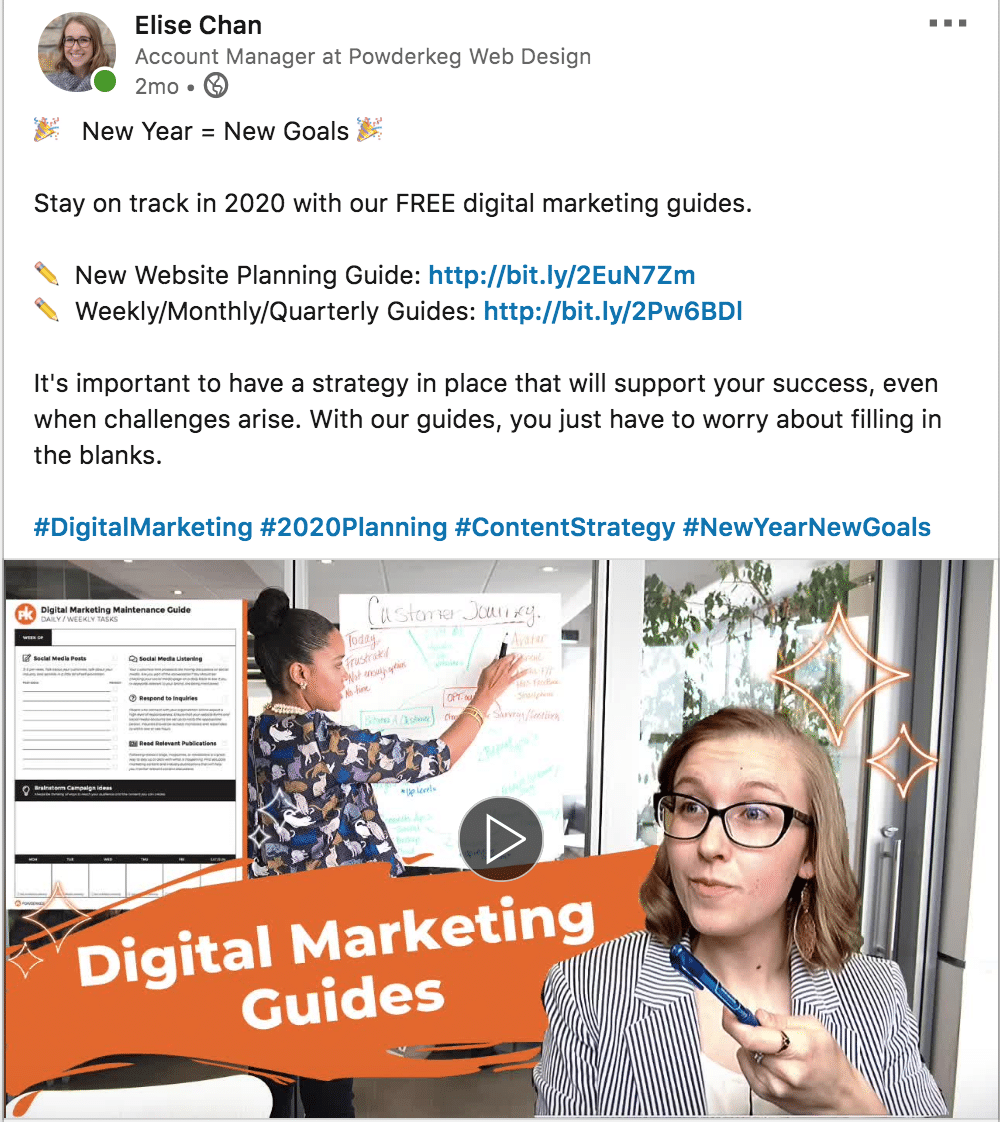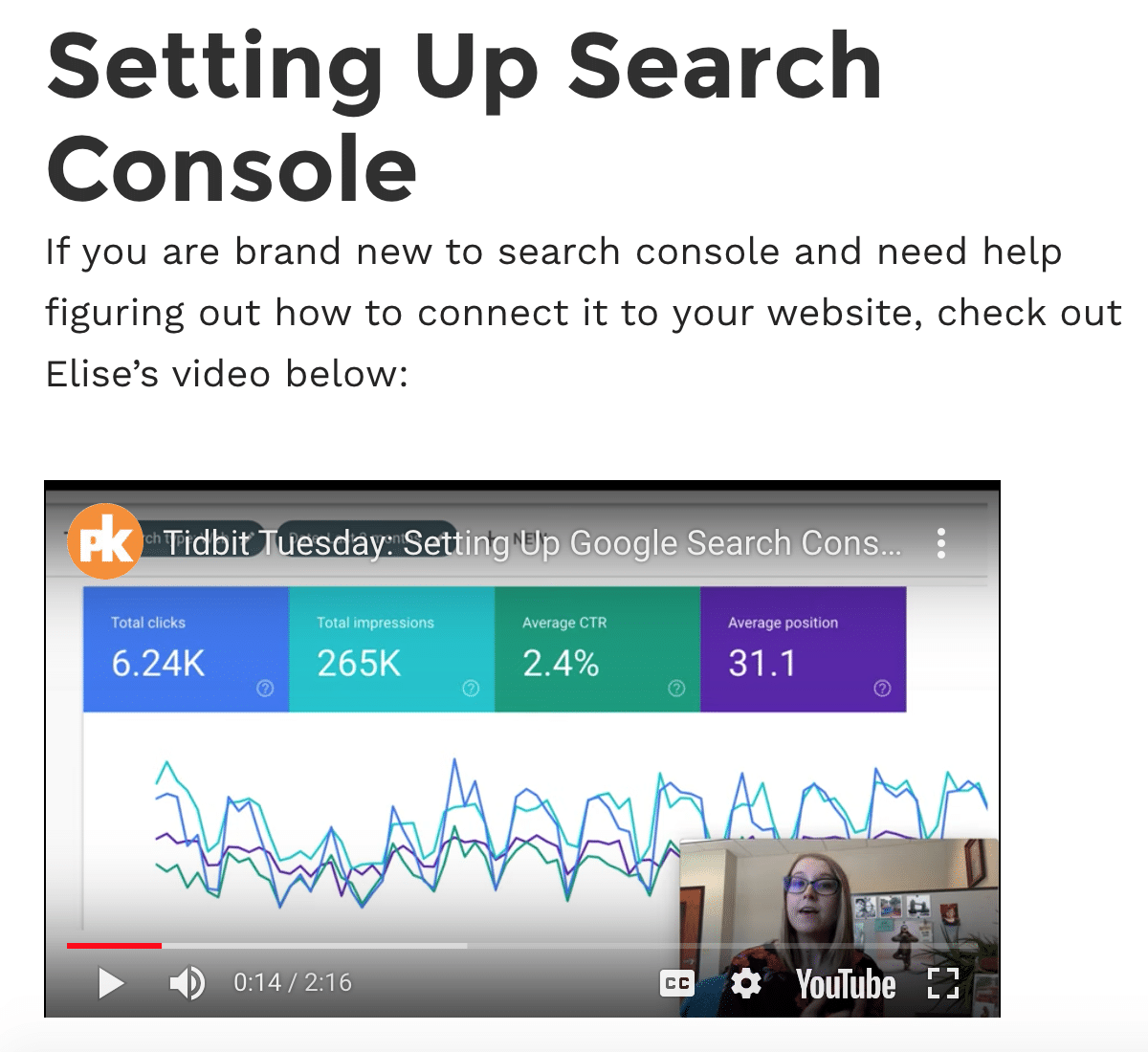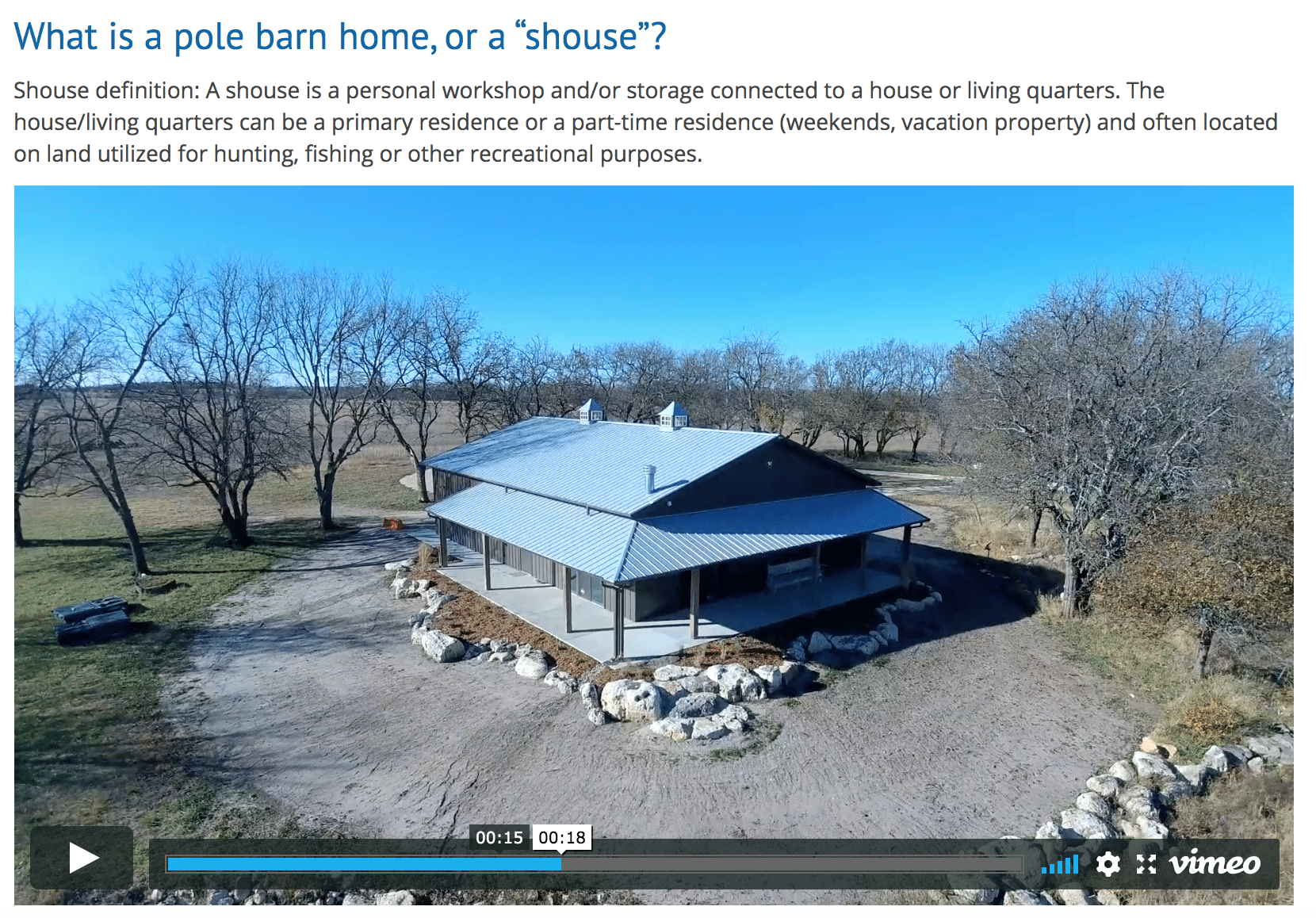Video is one of the most engaging forms of content, with more than 80% of digital marketers finding their video content has helped increase website traffic and conversion rates1. Despite these promising statistics and raving reviews, many marketers are too intimidated or overwhelmed to create video content.
Common reasons digital marketers aren’t using videos in their marketing strategy include a lack of:
- Budget for a professional videographer
- Video recording and editing tools
- Knowledge about how video can be used for their brand
Throw those worries out the window! Today, I’m going to share 10 EASY ways you can start creating and sharing your very own video content.
Easy Video Content Ideas
1. Social Teasers
Do you have an exciting new resource, upcoming event, or product release you want to share with your followers? Hop in front of your webcam or smartphone and record a video! You don’t need any fancy equipment for this. In fact, videos can actually perform better on social media when they fit in with content coming from real people.
These videos should be fairly short and to the point. Generally, the following durations are recommended2:
- Facebook: 2 minute max
- Twitter: 30 second max
- LinkedIn: 30-90 seconds
- Instagram: 30 second max
2. Lead Magnet Promotion
On a similar note, any campaigns surrounding the promotion of your lead magnet should include video! Make sure to explain who the offer is for, the value they will receive, and how they can access the offer. Here is an example of a video I posted to LinkedIn to promote our marketing and new website guides.
3. Webinars
A large part of your content strategy should be focused on educating your prospects and customers. A great way to do this is to host webinars. There are plenty of webinar platforms out there, which make it easy to set up an event and stream video (webcam and/or screen share). Our team uses GoToWebinar, which has the option to record our live webinars and send them to prospects or customers that were unable to attend.
4. Blog Post Intro Or Feature
There’s a good chance you’re already writing content for your organization’s blog, if not, check out this article about why you should blog. Adding video to your posts is a fun and easy way to change up the regular flow of information and increase engagement. You can use your video to introduce the rest of the post or support a specific discussion point.
Either way, it is important to upload your videos to YouTube or Vimeo so you can embed them in your post. Otherwise, your webpage may start loading slowly. Here’s an example of updating an existing blog post with a related video that supports the content:
5. Website Banner
Rather than using a featured image on your homepage, a video may be used to create even more of a visual impact. This video should not use audio and should focus on supplemental shots that support you message, branding, and culture. Basically, this is just a background video to make your website look fancy.
Our design team shared some of their favorite websites from 2019, and Matt’s example really demonstrates the power of using a homepage banner video:
These background videos really only need to be 30-60 seconds and on a loop. If you’ve worked with a vendor to create videos in the past, they may have some extra B-roll footage you can use. Otherwise, if you have a smartphone that shoots high resolution video you can try getting a variety shots of your team, office, and/or products like we did for our very own website!
6. Project Showcase
Are you in an industry that works on larger projects with a visual impact? Make sure you are taking pictures or video throughout the process! That way in your portfolio and case studies, you can put together a nice highlight reel of the project’s transition from start to finish, or the final product. Here is an example from Wick Buildings, showcasing one of their recent Shouse projects:
7. Q&A Session
Do experts in your organization have insights and information that your customers and even your industry would love to hear? Leverage these resources by filming a Q&A session that addresses these relevant talking points! Having trouble coming up with actual questions to ask your expert? Give your customers an opportunity to send in their very own questions to add an extra level of involvement.
There are many different ways to promote videos like this:
- eNewsletter (pique interest with an intro and video thumbnail that links out to a landing page)
- Social post
- Blog post
- Website video library
8. How-to Videos
Your content strategy should include ways to help ensure your existing customers are getting the most out of their purchase. This helps validate their purchasing decision while keeping you top-of-mind as a trustworthy and helpful resource. How-to videos are a great way to do just this! Here’s an example from Recreational Equipment, Inc. (REI):
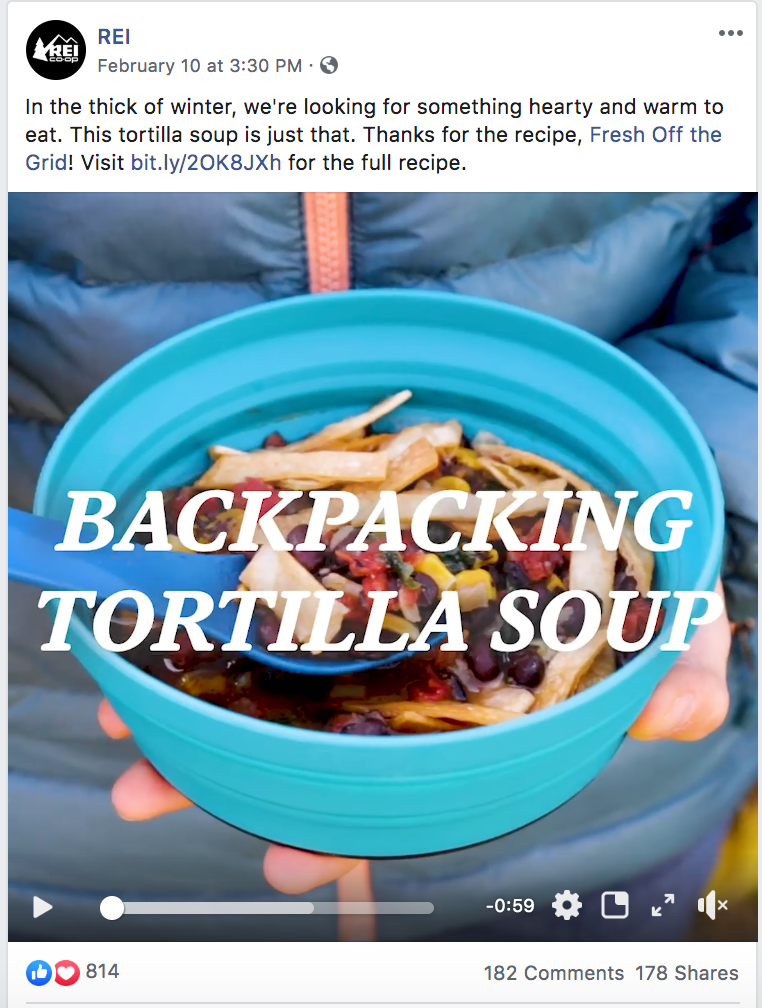
9. Industry News Updates
Has something life changing just happened in your industry? Or maybe your own organization is undergoing some changes? Keep your audience in the know by filming quick and informative industry status updates. Perhaps you have a regular schedule for publishing these videos, or you may use them only for breaking news.
10. YouTube Channel
It should be easy for you to set up a YouTube channel now that you have all of these great videos! In fact, a lot of your videos likely live on your YouTube account already if you’re embedding video content on your website like we recommend. To help make sure you’re getting the most out of your channel, follow these simple tips.
Brand Your Channel
YouTube offers quite a few customization options. Make sure you are creating and uploading the following:
- Banner Image – I recommend using a real photo of your team, office, or product. If you need help getting started, Canva is a free tool with prebuilt templates you can work off of.
- Channel Icon – This could be as simple as your logo.
- Video Thumbnail Images – Having a custom thumbnail rather than the default freeze frame makes a a big impact when it comes to branding and acting as a call-to-action for people to watch your video.
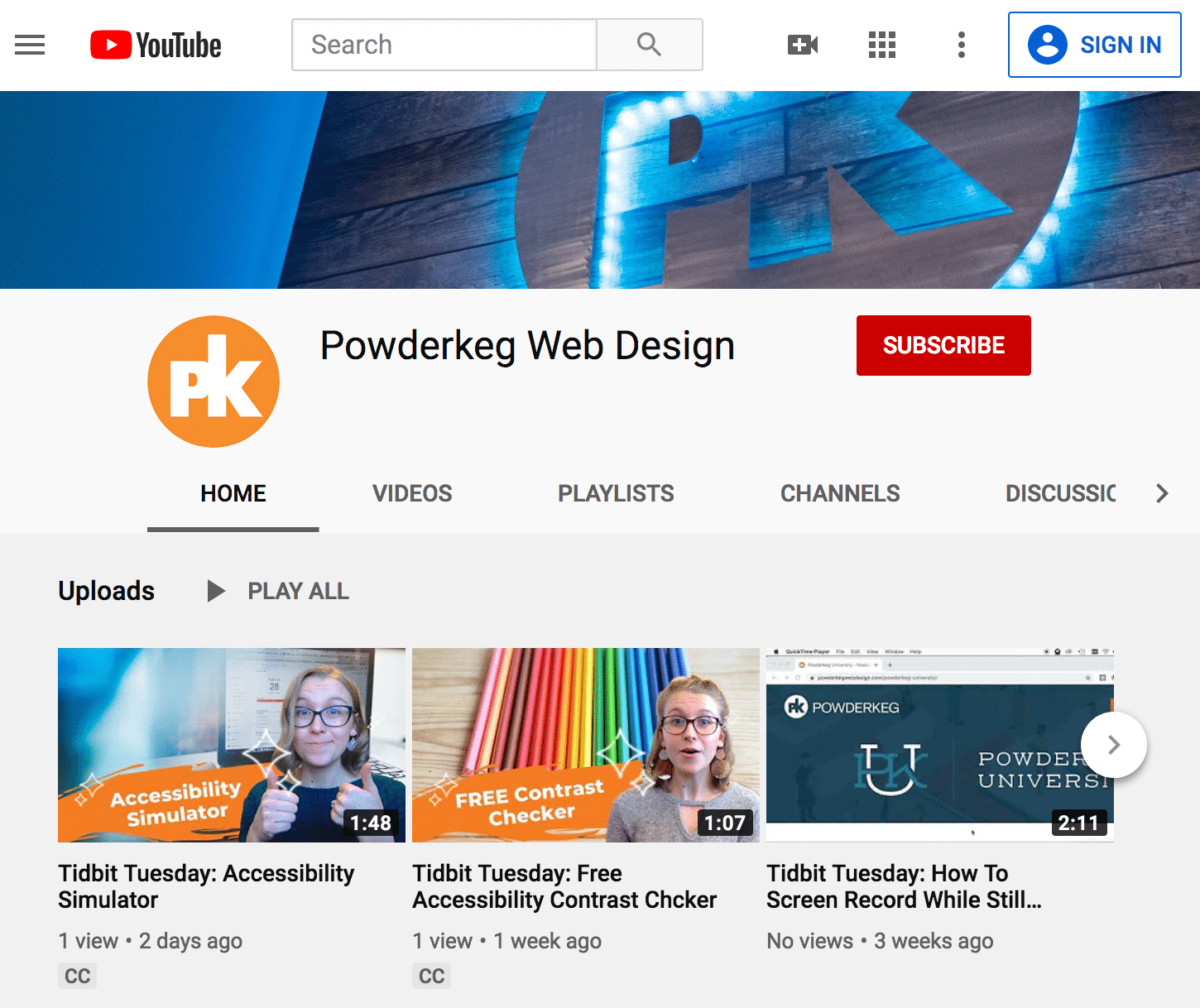
Featured Content
You can better engage channel visitors by setting up featured content, such as a:
- Welcome Video – Introduce your brand and your channel to new visitors.
- Featured Video – Keep your most timely content front and center by featuring a specific video to returning visitors.
- Playlist – Better organize your content by creating playlists.
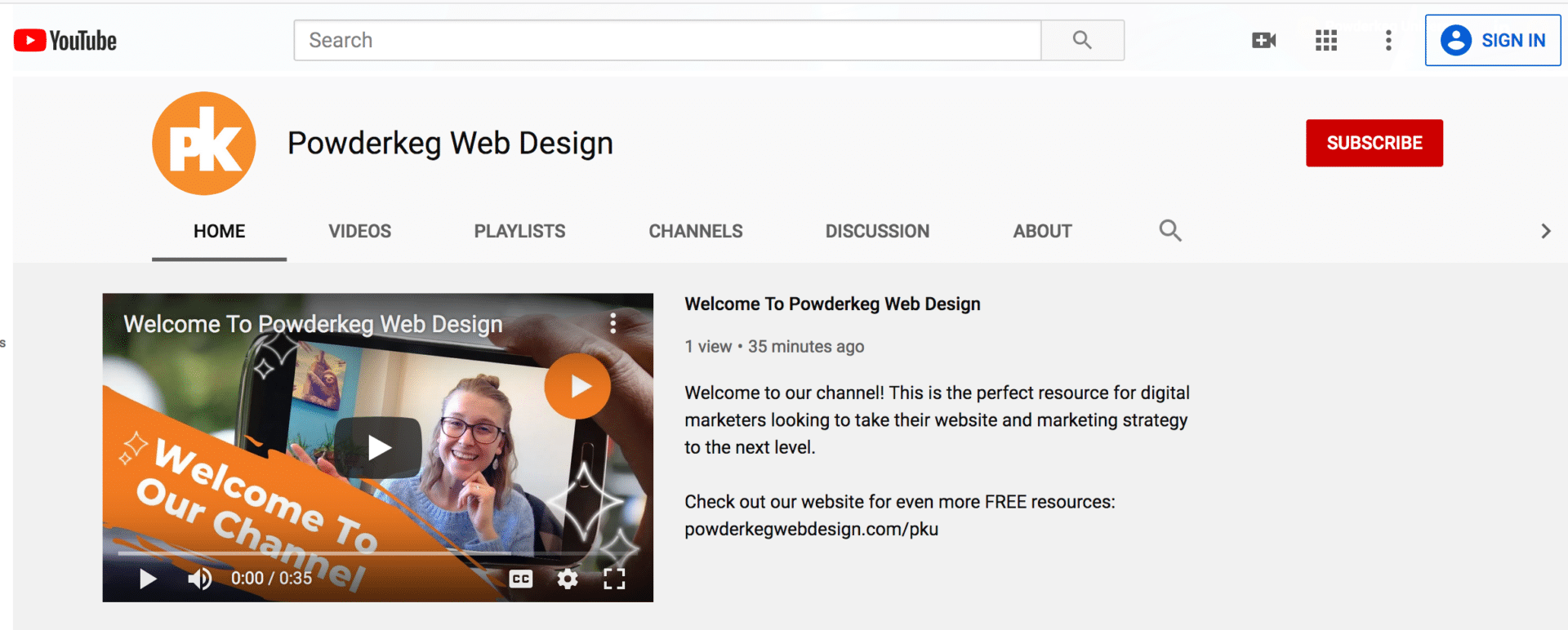
Closing Thoughts About Using Video
Hopefully you have some new ideas on ways you can incorporate video into your content strategy. There are of course many different approaches and often times you can use one video on multiple platforms. The main takeaways to remember are:
- Get creative – DIY videos can still be impactful and high quality.
- Be specific – Make sure you know your audience and create content they actually want.
- Stay concise – While video is super engaging, your audience can still get bored. Be short and to the point!
- Start now – The hardest part is getting started. Start experimenting with video and see what works for your brand the best.
Sources:
1- https://optinmonster.com/video-marketing-statistics-what-you-must-know/
2- https://2060digital.com/blog/right-video-length-platform/



